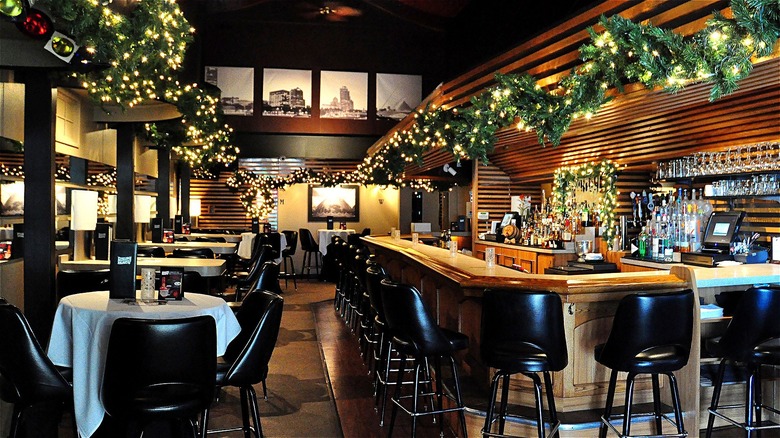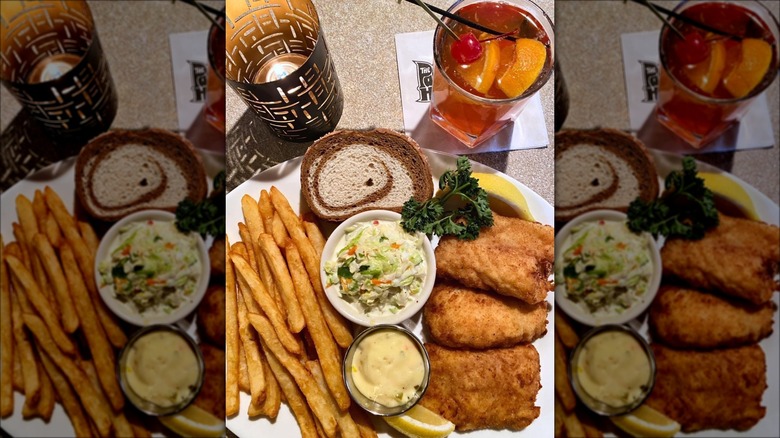The Humble Midwest Origins Of Supper Clubs
Supper clubs seem like a charming relic of the mid-20th century, and one with which you may not be familiar if you were not born before the baby boom. Back in the day, supper clubs could be pretty swanky, complete with fine dining and dancing to live orchestra music. The first such establishment opened in Beverly Hills, of course, as the city seemed the epitome of elegance and the capital of all things chi-chi back in the 1930s.
Interestingly enough, the man who opened the first supper club was not a Californian but hailed from the Upper Midwestern. Nearly a century later, Milwaukee claims Lawrence Frank as one of its most prominent native sons and proudly points to his other accomplishments including introducing the salad bar, surf-and-turf, and to-go bags for restaurant leftovers. You might even find one of Frank's innovations in your spice cabinet, as Lawry's Seasoned Salt was created to spice up the prime rib that the earliest supper club served up for the princely sum of $1.25 (although you did get a baked potato, Yorkshire pudding, and salad as well).
Lawry's salt and supper club concept both caught on and went mid-century viral, although the latter eventually went the way of the black-and-white snapshots in which its memory is enshrined. It's hard to pinpoint an exact date for the end of the supper club era, but many modern-day recollections of these are heavily nostalgia-tinged and rely on memories of parents and grandparents to bring back bygone days.
Supper clubs are alive and well in Wisconsin
The supper club tradition hasn't entirely died out, however. While a few outposts still stand in spots such as NYC's Rainbow Room (which probably deserves the descriptor "iconic," although we're trying to cut down on its use) and San Francisco's upstart Lazy Bear, genuine old-time supper clubs, as well as more modern ones, still thrive in the Badger State. Wisconsin is used to being an outlier in many ways, not just geographically, as it's also the one state where brandy is the preferred tipple and Old Fashioneds are sweet or sour and oh-so-fruity.
Many Wisconsin supper clubs in the 20th century started as glorified speakeasies and some were even patronized by gangsters on the lam (Chicago's just hours away), with Manitowish Waters' Little Bohemia Lodge still known for the bullet holes in its walls. Today's typical small-town Wisconsin supper club tends to be a gathering spot where people may meet up after mass, perhaps for brunch (or dinner, if it's Saturday afternoon mass) and maybe a game of cards. In cities, too, supper clubs still draw quite a crowd and it's rather appropriate that Milwaukee, home to the original supper club creator, boasts quite a few such establishments. Whether urban or rural, supper clubs live up to the name in that they tend to be social hubs, albeit ones that don't charge membership fees above and beyond the price of a meal with perhaps a pink squirrel or grasshopper to follow

